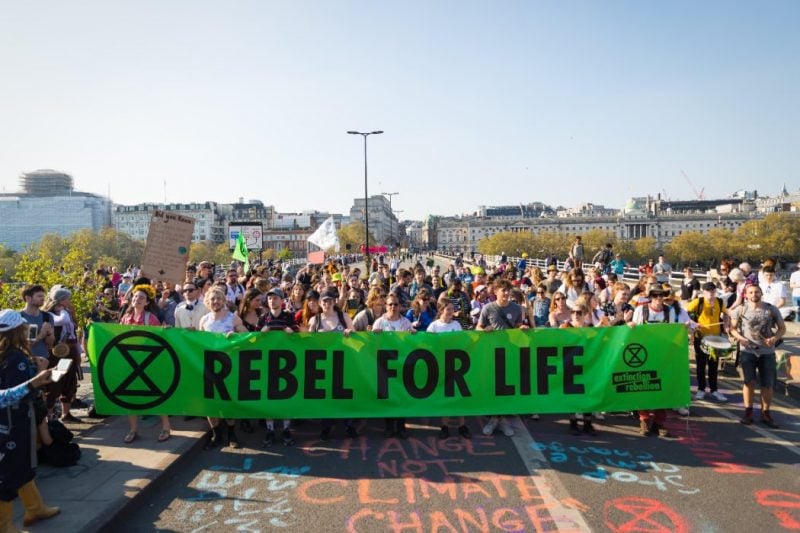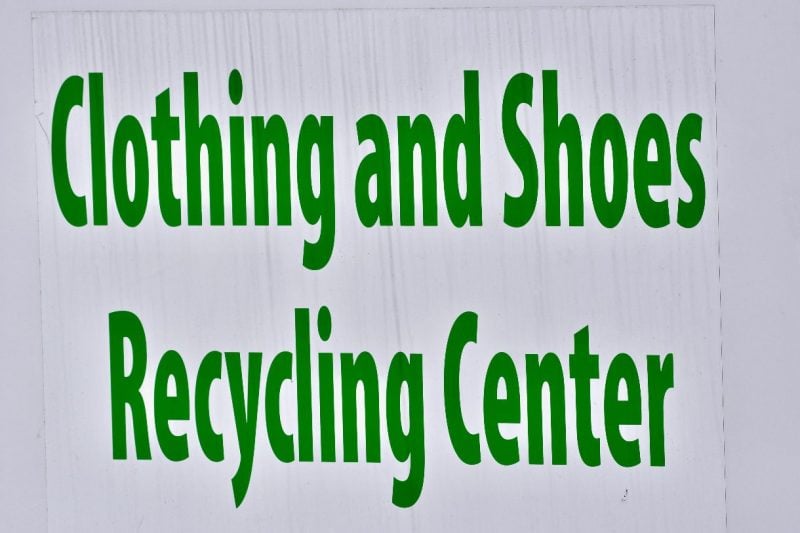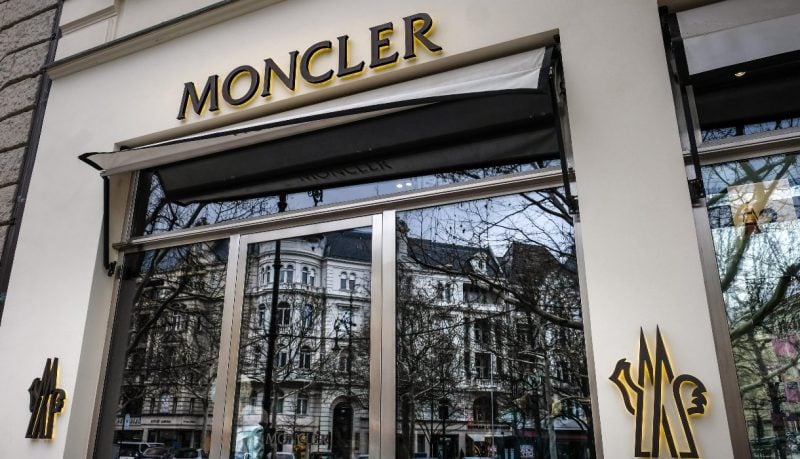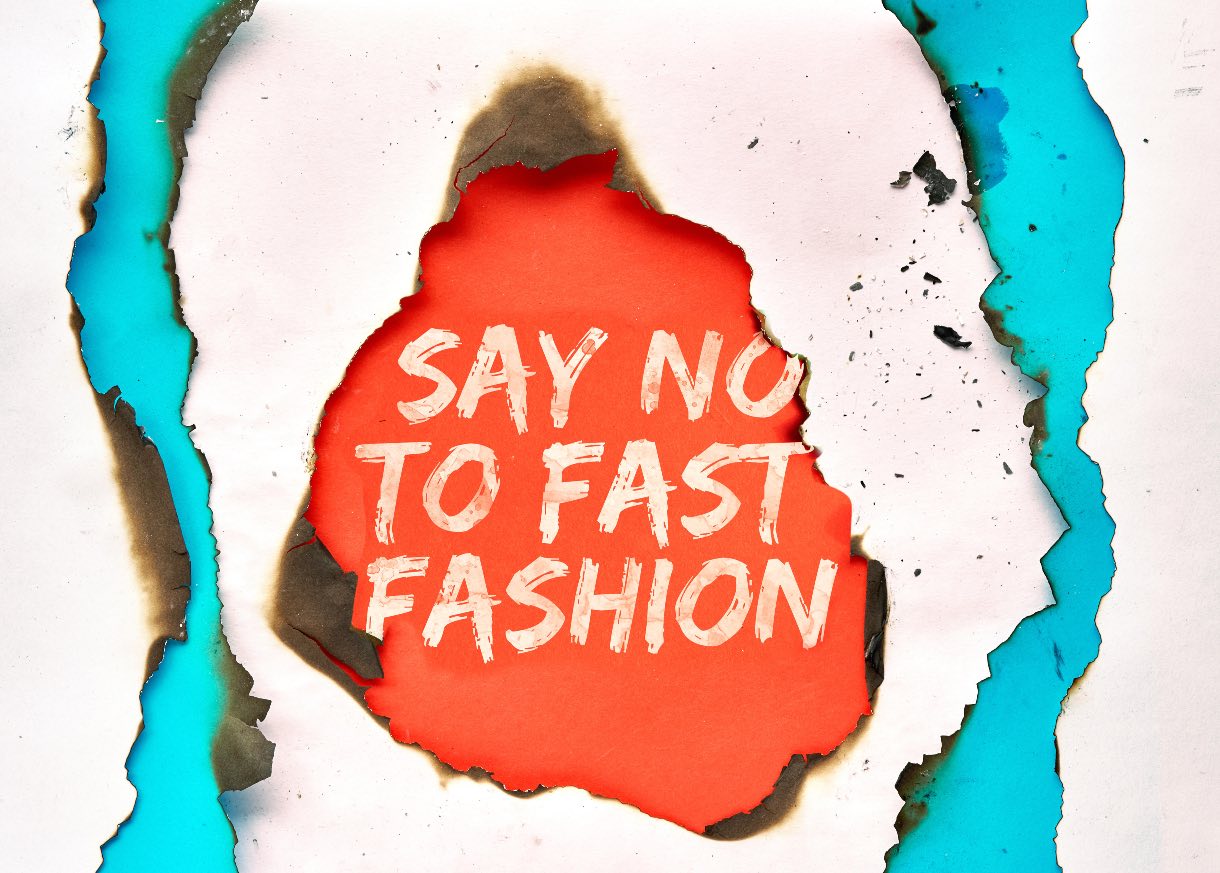The fashion industry is valued at over one trillion US dollars; it accounts for 2% of global GDP and employs 1 in every 10 workers around the world. However, while the fashion industry’s global economic reach is huge, the systemic environmental problems challenging the industry are equally as far reaching. The fashion industry contributes one tenth to annual global carbon emissions, 5% of global water use, and it has been recognised as a sector with the highest risk of modern slavery in its supply chains. Fast fashion retailers are often seen as the biggest culprits perpetuating negative environmental and social impacts, namely through increasing production of cheaper quality clothing. This, combined with the explosion of online retailers, fast fashion has become seasonless, never ending and wasteful. Collection after collection, thousands of tonnes of fashion is created followed by thousand more tonnes of waste. And with climate change at the forefront of public consciousness, highlighted by a global movement towards environmentalism and sustainability with groups like the Extinction Rebellion causing havoc through coordinated protests, I tackle the fashion industries biggest concern: Can Fast Fashion ever be environmental?

For the third consecutive year in a row, H&M (and the H&M group which includes Cos, &Other Stories and seven other brands) has been recognised by the British online retail publication Drapers for their contribution to the fashion industry. During Drapers exclusive awards ceremony, H&M was awarded Sustainability Award of The Year. H&M is continuously identified as one of the world’s most environmental and sustainable fashion brands for various reasons. This includes H&M Conscious Collection which was introduced in 2011, as well as packaging-free delivery in India and electrical vans worldwide. Many of these innovations were the first of their kind, thus, were welcomed as the first step by a major fast fashion brand to reduce its carbon footprint. It’s these strides towards environmentalism that allowed the Swedish retailer to secure the number four spot on the Fashion Revolution 2018 Transparency Index, as well as the Sustainability Award by Drapers.
However, while it’s commendable that H&M was rewarded for becoming ever more transparent, transparency doesn’t always mean green or sustainability. On the contrary, it could be argued that H&M’s production processes don’t support authentic sustainability at all. This is an argument supported by the fact that, in 2018, H&M discarded 4.8 billion garments worldwide. Therefore, despite highly publicised statements on sustainability and environmental commitments, H&M has made no concrete commitments to curb their negative environmental impact – which is comprised of high production volumes, quick turnaround times and low prices. Through this fast fashion evolution, H&M is one of the global brands responsible for creating ‘throwaway culture’ that saturates the fashion industry today. H&M sells 3 billion garments and accessories annually across its 4,800 stores much of which contributes to the 300,000 tonnes of clothes end up in landfill each year in the UK alone. But when confronted with this harsh reality, H&M’s Hallin turns attention to the brands transparency, and their rivals lack of. However, as Elizabeth Cline, author of Overdressed: The shockingly High Cost of Cheap Fashion argues, “it’s not enough to just be less bad than your competition.”

Moreover, H&M is not solely responsible for fast fashions dominance and wasteful practices. H&M’s biggest marketplace rival and fast fashion sustainability competitor is Spanish retailer Zara. In July 2019, Zara boldly pledged to only use 100% sustainable fabrics by 2025; this includes “recycled polyester and organic cotton”. However, after analysing Zara’s sustainability strategy, it becomes apparent that Zara is guilty of greenwashing and masquerading their promises. This is notable when Zara lump together two diametrically opposed fabrics – recycled polyester and organic cotton. Using the two materials in the same sustainability strategy, least of all the same sentence, and synthetic is very confusing for experts and consumers alike. Organic cotton, which will decompose, within the same sustainability parameters as crude-oil based polyester which will never biodegrade, as well as the two materials differentiating carbon footprints, means the two are by no means comparable and shouldn’t be linked. Not to mention neither fast fashion retailers give actual specifics on how their garments are better for the environment. However, to an unknowing shopper, H&Ms Conscious Collection is dream shop for someone who can save the planet by shopping a $10 shirt or $29 mom jeans.
Brands like H&M and Zara are now being exposed for mystifying their sustainability strategies and environmental responsibility. Recently, Norwegian Consumer Authority (CA) called out H&M for “misleading” consumers with their failure to provide sufficient detail about why their clothing is less polluting than other garments. This means it is unclear whether H&M is engaging in sustainable sourcing or manufacturing, or whether this is a marketing tool to sell more products. When responding to CA’s claims, H&M stated: “We are pleased that the Norwegian Consumer Authority shines a light on marketing of sustainable alternatives… We have a good dialogue with them regarding how we can become even better at communicating the extensive work we do. We had a very good meeting and talk with them and we are glad that they want to work with us and help us provide correct and clear information to consumers.” However, more information is still yet to be provided.

One way H&M could communicate the extensive work they do is through their annual Sustainability reports in which they are held to account and benchmarked against their claims. However, similar ambiguity can be found in H&Ms 2018 Sustainability Report. In their Key Achievements, H&M boast “57% of all materials we use to make our products are recycled or other sustainably sourced materials.” The issue here is, there is no uniform definition of “sustainably sourced materials” meaning H&M doesn’t have to define or prove it is being sustainable or from where they have sourced their fabrics. Fast fashion brands like H&M are able to avoid scrutiny and continue to make bold promises that they do not have to meet.
There are many sustainability indices that measure fashion brands environmental impact, the most tried and tested being the Dow Jones Sustainability Indices (DJSI). Launched in 1999, DJSI is a family of indices evaluating the sustainability performance of thousands of companies and household names trading publicly, measured under a strategic partnership between S&P Dow Jones Indices and RobecoSAM (Sustainable Asset Management). Each year, companies are ranked in order of best to worst, this year, Italian luxury outerwear and fur label Moncler was awarded textiles, apparel and luxury goods “industry leader” of the Dow Jones Sustainability Index (DJSI). While this is a huge achievement for any fashion brand, this is the first time that the Moncler has been included in the ranking, highlighting how slow fashion comprised of natural materials are recognised at the highest industry standard as being the most sustainable, environmental and sustainable.
In terms of Sustainability, which according to DJSI includes human rights, human capital development and health and safety, Moncler scored an impressive 85 (against an industry average of 32). With regards to environmental sustainability, which refers to product stewardship, operational eco-efficiency and environmental policy and management systems, Moncler scored 92 against an industry average of 41. Andy finally, for economic sustainability which takes in to account customer relationship management, risk and crisis management and supply chain management, Moncler scored 82 against an industry aggregate of 33.

Moncler Chairman and CEO Remi Ruffini stated: “At Moncler, we have long been committed to creating value for all steak holders through the continuous integration of sustainability into our business model. A lot has been done to date, but we know that we need to do more in order to find solution to the imminent social and environmental challenges facing humankind globally.” Ruffini continued, ” Entering the Dow Jones Sustainability Indices as industry leader is an extraordinary result for Moncler and testament to the great commitment of our more then 4,000 people who put their professionalism and best energy into their work every day to contribute to delivering a bright future for generations to come.”
So, where do we, the public, go from here? For starters, if retailers want to create substantial environmental change and reform, they must start with manufacturing. According to British Vogue, 97% of the apparel industry’s total global climate impact can be attributed to fibre and fabric production, yarn preparation and dying. Therefore, if fast fashion was as transparent, responsible and sustainable as the Fur Trade, much of the fashion industries polluting practices could be eradicated. Fast fashion has arguably been born from a public demand of newer and cheaper clothes. Not everyone has the means to invest in a leather bag or fur coat which will last a lifetime and can be handed down through the generations, but one thing we can all learn from fast fashions mistakes is the need to consume less, consume better quality. The environment and the livelihoods of the future generations depend on it.





